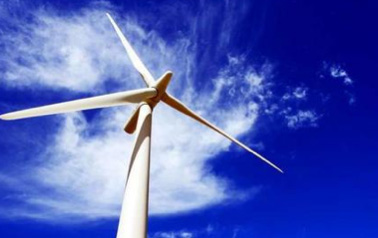Capital spending on energy this year is set to plunge by 18%, as global energy demand is expected to fall by 5% in 2020, a pullback not seen since World War II, the Paris-based agency said in its annual report on the future of the industry.
But the projected investment cuts are highly uneven, highlighting a divergence in what companies, markets and investors are willing to finance. Spending on new oil and gas supplies took the largest hits, while renewable energy held up better than any other source, the IEA found. The pandemic weakened corporate balance sheets and increased uncertainty over future fuels demand, spurring the record cuts.
Solar- and wind-energy projects are benefiting from falling costs, as well as widespread government support, and monetary policies that support low interest rates. The IEA expects renewables to provide 80% of the growth in global electricity demand through 2030.
“Solar is now the new king of electricity markets,” said IEA executive director Fatih Birol. Of low interest rates, he added: “This is very important for clean energy technologies as they require relatively high upfront costs. Putting these things together we are seeing a big boom in renewable energies.”
Mark Florian, head of the global energy and power infrastructure funds at BlackRock Inc., the world’s largest asset manager, said some investors were attracted to the stable returns that renewable projects could provide, but that the sentiment wasn’t universal.
“We definitely see further growth in renewable energy investment and certain institutional investors who want to push harder, but I wouldn’t say that is ubiquitous,” he said.
Some of the world’s largest energy companies have begun rethinking future investments in light of a changing investor and regulatory landscape. BP PLC last month detailed a strategy to steer away from oil and toward renewables. It also predicted that oil demand may have peaked right before the pandemic.
“The pandemic I believe only adds to the challenge of oil in the future,” BP Chief Executive Bernard Looney said earlier this year. He suggested changed habits such as working from home and reduced travel could stick, thereby reducing fuel demand permanently.
French energy firm Total SA last month said it would increase spending on renewables to $3 billion a year by 2030, up from $2 billion a year.
The IEA, an advisory body for the 37 wealthy nations of the Organization for Economic Cooperation and Development, which include the U.S., Germany and Japan, said its members’ annual demand for oil had probably already peaked, and their thirst for petroleum wouldn’t return to pre-pandemic levels.
But oil demand is expected to continue growing in developing economies such as China and India, leading overall global oil demand to recover to pre-pandemic levels in 2023. The IEA forecast that oil and natural gas were still expected to make up nearly half of the global energy mix in 2040, even under a scenario that projects sustained government support for low-carbon investments.
“It is a challenging year for our industry and many others, but as economies recover, we remain optimistic about what lies ahead,” said Frank Macchiarola, a senior vice president at the American Petroleum Institute, a U.S.-based trade group of oil producers. “Oil and natural gas will continue to be a significant source of that energy for decades to come.”
For coal producers, the outlook is bleaker. The IEA said global demand for the fuel wouldn’t exceed its 2014 peak, and by 2040 will comprise less than a fifth of the global energy mix for the first time since the industrial revolution.
Mr. Birol said that meeting new demand with renewables wasn’t enough to reduce greenhouse gas emissions. He noted that existing energy and heavy industry facilities—including coal and petrochemical plants, cement kilns, steel and iron manufacturers—would generate enough emissions before they are retired and replaced to increase global temperatures.
Those facilities are projected to lock in an estimated 1.65 degrees Celsius of temperature increase, making all but impossible international efforts such as the Paris Agreement, which aims to keep increases to 2 degrees Celsius, the IEA estimated.
“What we build new should be clean,” he said. “Second, we have to tackle the existing energy infrastructure, which if it is left…will make all of our climate goals out of reach.”
Lowering those emissions would require new governmental policies across the globe, with countries working together on financing and technology to promote low-carbon energy. The lessons from fighting Covid-19 aren’t encouraging, said Daniel Raimi, senior research associate at Resources for the Future, a nonprofit and nonpartisan energy and environment policy center.
“So far, I think we’ve seen more suspicion and acrimony with Covid, rather than cooperation and coming together,” he said. “I take that as a negative sign.”
While the pandemic has caused fossil-fuel investment to drop in the short run, and a projected 7% decline in energy-related greenhouse gas emissions in 2020 according to the IEA, those impacts may be short-lived. China, the first country to experience the pandemic and reboot its economy, has already seen emissions levels return to pre-pandemic levels, the IEA report said.
The next decade will be crucial in determining whether the transition to clean energy pushes “emissions into structural decline,” the report said.
“We’re at a precipice, we can invest in the things that make our world safer or we can stick our heads in the sand,” said Angela Anderson, director of the climate and energy program at the Union of Concerned Scientists. “The opportunity is there. The cost barriers are dwindling and consumer resistance to change is far less than we’ve seen in the past.”












